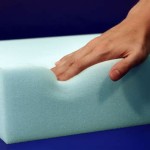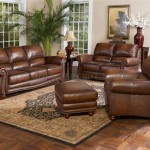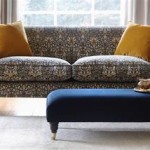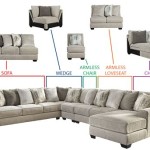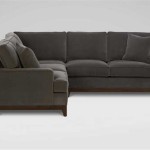What Colours Go With a Teal Sofa: A Comprehensive Guide
A teal sofa can serve as a striking focal point in any living space. Teal, a sophisticated blend of blue and green, possesses a unique versatility that allows it to complement a wide spectrum of colors. Understanding these complementary and contrasting relationships is crucial for creating a harmonious and aesthetically pleasing interior design.
The success of incorporating a teal sofa into a room hinges on the careful consideration of the accompanying color palette. The surrounding colors will either enhance the teal’s inherent qualities or clash awkwardly, diminishing its visual appeal. This article will explore various color pairings that work effectively with teal, providing practical insights for interior design applications.
Understanding the Nuances of Teal
Teal itself is not a monolithic color; it encompasses a range of shades and intensities. Some teals lean more heavily towards blue, resulting in a cooler tone, while others have a stronger green presence, lending them a warmer character. Identifying the specific undertones of your teal sofa is the first step in selecting appropriate accompanying colours. Consider the lighting in the room, as natural light can enhance the blue undertones, while artificial light may emphasize the green. Examining the sofa in different lighting conditions will provide a more accurate understanding of its true colour.
Factors like the material of the sofa and its texture can also influence how it interacts with light and color. A velvet teal sofa, for example, will appear richer and more saturated than a linen teal sofa. These subtle nuances impact the overall perception of the colour and should be taken into account when selecting complementary colours. Failure to consider these nuances can lead to a mismatched and disjointed aesthetic.
Complementary Colours: Enhancing Teal's Appeal
Complementary colours are those that sit opposite each other on the color wheel. For teal, the complementary colour is typically a shade of red-orange. This doesn't necessarily mean painting an entire wall a bright orange, but rather, strategically incorporating accents of this color family. Think terracotta pots, rust-colored cushions, or artwork featuring warm oranges and reds. These additions create a visually stimulating contrast that accentuates the depth and richness of the teal sofa.
The intensity of the complementary colour should be carefully controlled. A muted terracotta or a burnt orange can be more sophisticated and easier to live with than a vibrant, saturated orange. The goal is to provide a visual counterpoint to the teal, not to overwhelm it. The amount of complementary colour used should also be proportional to the size of the room and the overall design scheme. In a smaller space, less is often more.
Beyond direct complementary colours, analogous color schemes can also be highly effective. Analogous colours are those that sit next to each other on the color wheel. For teal, this includes shades of blue and green. Creating a monochromatic or near-monochromatic scheme with varying shades of blue and green can establish a calming and sophisticated ambiance. This approach is particularly well-suited for bedrooms or living rooms where relaxation is the primary goal.
Neutral Color Palettes: A Versatile Backdrop
Neutral colors, such as white, gray, beige, and cream, offer a versatile and timeless backdrop for a teal sofa. These colors allow the teal to take center stage while providing a sense of balance and visual calm. The specific neutral shade chosen should complement the undertones of the teal. A cooler teal might pair well with a cool gray or a crisp white, while a warmer teal might benefit from a creamier beige or a warmer gray.
White walls create a clean and modern aesthetic, allowing the teal sofa to truly pop. This combination is particularly effective in minimalist or Scandinavian-inspired interiors. Gray, on the other hand, offers a more sophisticated and understated backdrop. A light gray can create a serene and airy feel, while a darker gray can add depth and drama. Beige and cream offer a warmer alternative, imbuing the space with a sense of comfort and coziness. These colors are particularly well-suited for traditional or transitional interiors.
The key to utilizing neutral colors effectively is to introduce texture and visual interest through other elements in the room. This can be achieved through the use of rugs, cushions, throws, and artwork. Varying the textures and patterns within the neutral palette prevents the space from feeling flat or sterile. For example, a white room with a teal sofa could be enhanced with a textured rug, linen curtains, and patterned cushions in complementary colors.
Bold Color Choices: Creating a Statement
For those seeking a more dramatic and unconventional look, pairing a teal sofa with bold colors can create a truly striking statement. However, this approach requires careful planning and a keen eye for color harmony. One option is to introduce pops of vibrant yellow. Yellow sits near green on the colour wheel, providing a harmonious yet energetic contrast to teal. This combination can be particularly effective in bohemian or eclectic interiors. Consider using yellow in cushions, artwork, or decorative accessories.
Another bold choice is to pair teal with shades of pink or coral. These colors create a playful and unexpected contrast that can be surprisingly sophisticated. The specific shade of pink or coral should be carefully chosen to complement the specific shade of teal. A muted blush pink or a dusty rose can be a more elegant choice than a bright, bubblegum pink. These colors can be incorporated through artwork, textiles, or even a painted accent wall.
When using bold colors, it's crucial to maintain a sense of balance. Avoid overwhelming the space with too many competing hues. Consider employing the 60-30-10 rule, where 60% of the room is dominated by a neutral color, 30% by a secondary color (such as teal), and 10% by a bold accent color. This approach ensures that the bold color serves as a focal point without overpowering the overall design.
Metallic Accents: Adding Glamour and Sophistication
Metallic accents can elevate the look of a teal sofa, adding a touch of glamour and sophistication to the space. Gold, silver, and copper all pair well with teal, depending on the desired aesthetic. Gold accents create a warm and luxurious feel, while silver accents offer a more modern and refined look. Copper accents provide a touch of rustic charm and warmth.
Metallic accents can be incorporated through various elements, such as coffee tables, lamps, picture frames, and decorative accessories. A gold coffee table paired with a teal sofa can create a focal point in the living room. Silver lamps can add a touch of elegance and sophistication. Copper picture frames can complement artwork and add warmth to the space. The key is to use metallic accents sparingly and strategically, avoiding an overly glitzy or ostentatious look.
The choice of metallic accent should also be guided by the overall design style of the room. Gold accents are well-suited for traditional or glamorous interiors, while silver accents are more appropriate for modern or minimalist spaces. Copper accents can add warmth and character to bohemian or rustic interiors. By carefully considering the design style and the specific shade of teal, one can effectively incorporate metallic accents to enhance the sofa's visual appeal.
Wood Tones: Grounding the Space
The selection of wood tones in furniture and flooring plays a significant role in complementing a teal sofa. Different wood tones evoke different moods and can either enhance or detract from the overall aesthetic. Light wood tones, such as birch or maple, create a bright and airy feel, while dark wood tones, such as walnut or mahogany, add depth and drama. The ideal wood tone will depend on the specific shade of teal and the desired ambiance.
Light wood tones work well with cooler shades of teal, creating a Scandinavian-inspired aesthetic. The lightness of the wood allows the teal to take center stage without overwhelming the space. Dark wood tones, on the other hand, can create a more sophisticated and dramatic contrast with teal. This combination is particularly effective in traditional or transitional interiors. It's important to ensure that the dark wood tones don't make the room feel too heavy or oppressive. This can be mitigated by incorporating lighter colors in other elements of the room, such as the walls, rugs, and curtains.
Mid-tone wood finishes, such as oak or cherry, offer a versatile option that can work well with a variety of teal shades. These wood tones provide a balance between lightness and darkness, creating a warm and inviting atmosphere. The specific mid-tone chosen should complement the undertones of the teal. A warmer teal might pair well with a cherry finish, while a cooler teal might benefit from an oak finish. By carefully considering the wood tones in the room, one can create a cohesive and harmonious design scheme that showcases the beauty of the teal sofa.
:strip_icc()/KatieMartinezDesign3-85b8a00db5854a158eead7a030acf198.jpg?strip=all)
18 Best Teal Living Room Ideas
:max_bytes(150000):strip_icc()/ScreenShot2023-11-09at2.54.23PM-3af7b43911574f0cb6cd70ea0bfd119c.png?strip=all)
26 Colors That Go With Teal For A Bright Refresh

How To Decorate With A Teal Sofa Blog Darlings Of Chelsea Living Room Couch

Teal Colour Goodhomes

27 Bold Turquoise Sofa Ideas For Your Living Room Digsdigs

Teal Living Room Ideas 2024 Checkatrade

Interior Design Trends To Know In 2024 Teal Couch Living Room Sofa Rooms

15 Living Rooms That Boast A Teal Color

Decorating With Teal Blue

Teal Room Décor Ideas The Heal S Blog

